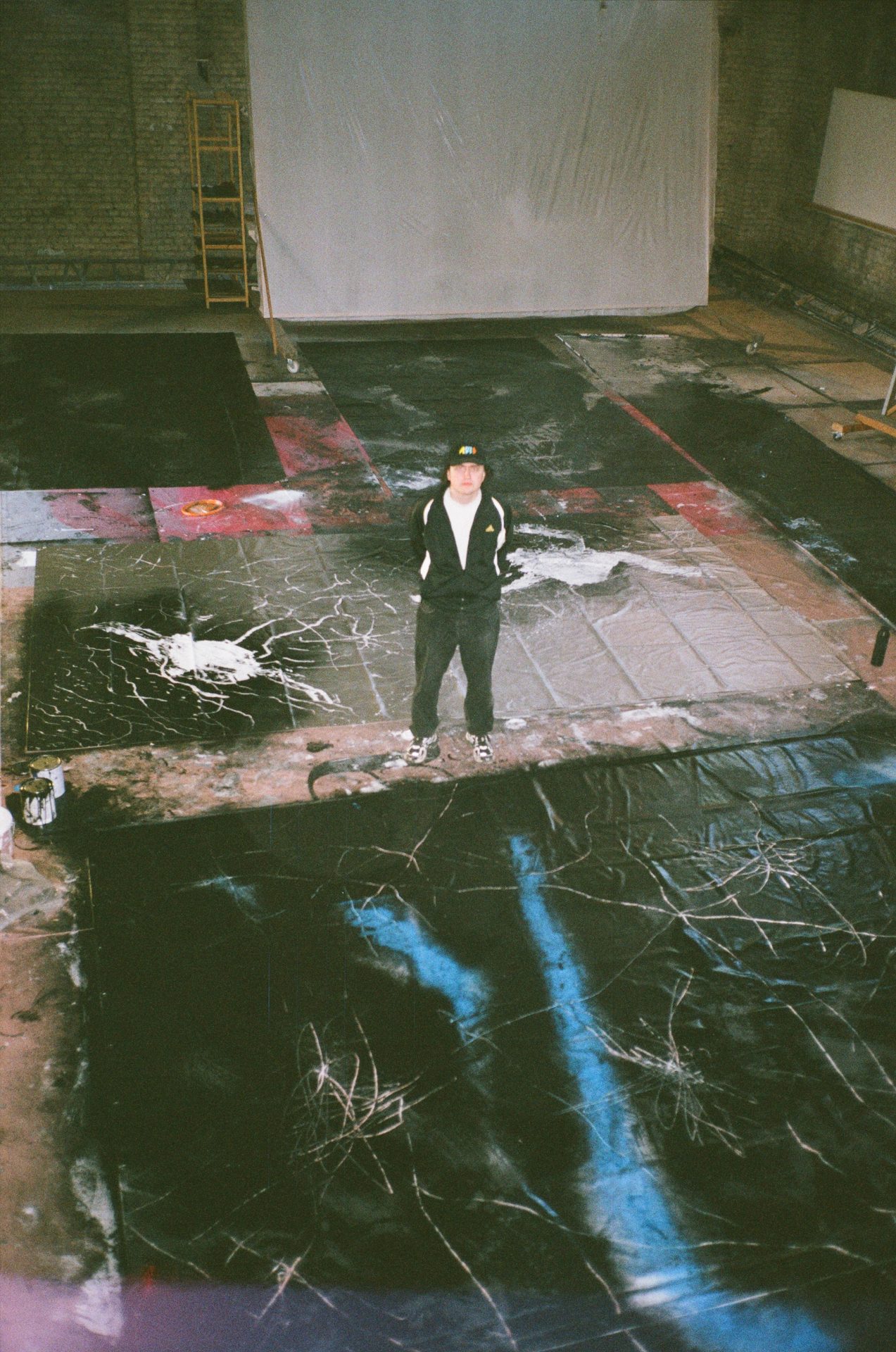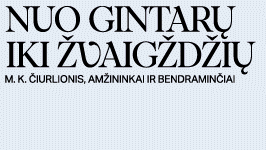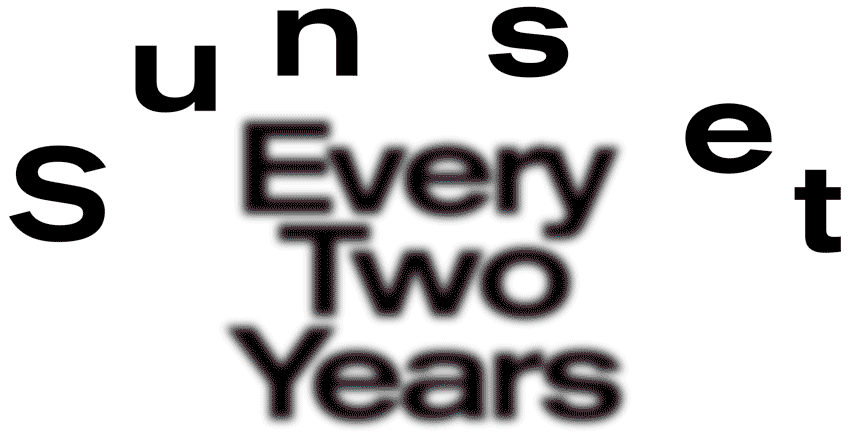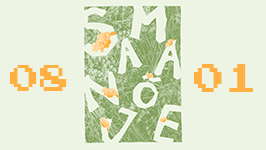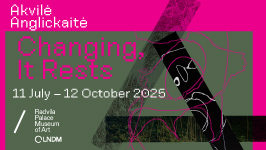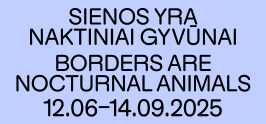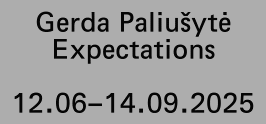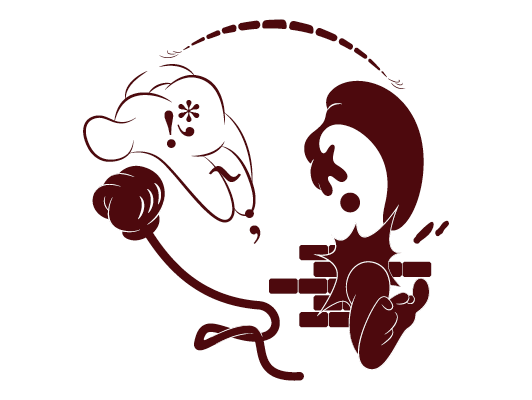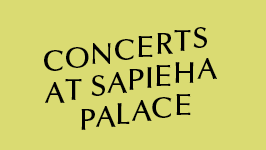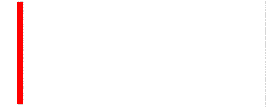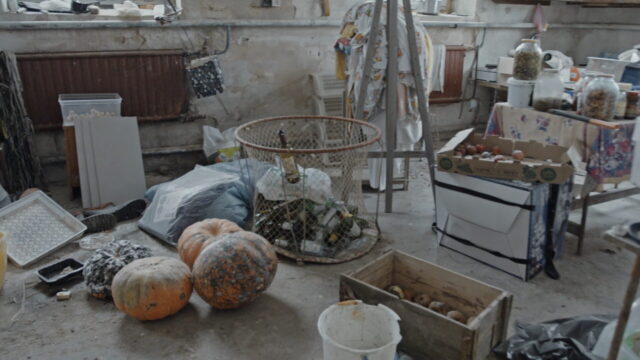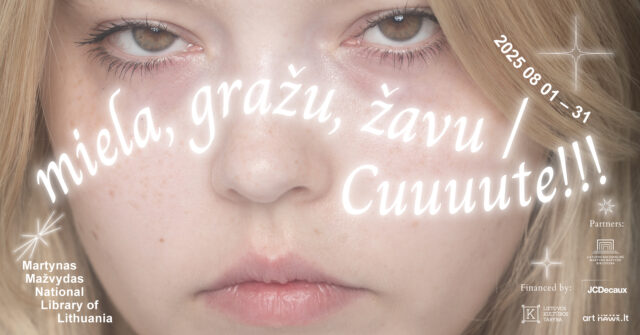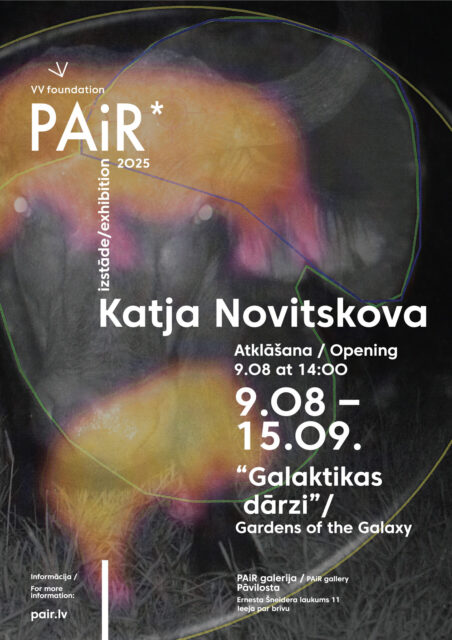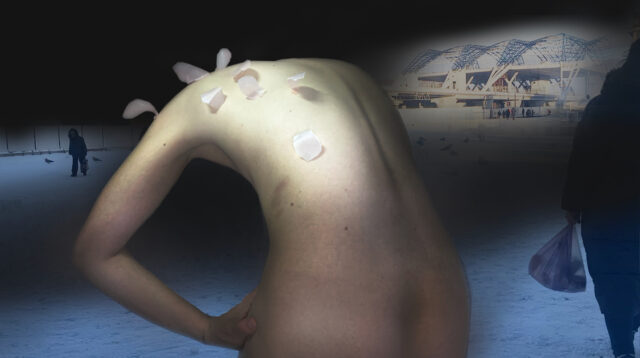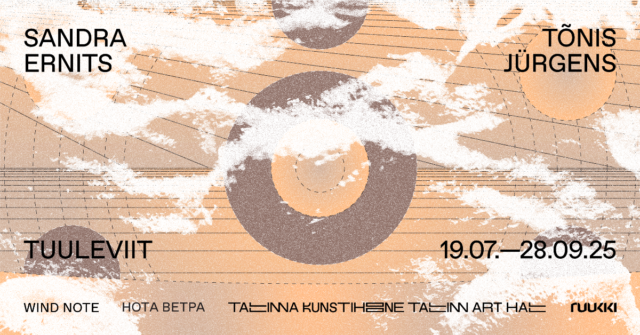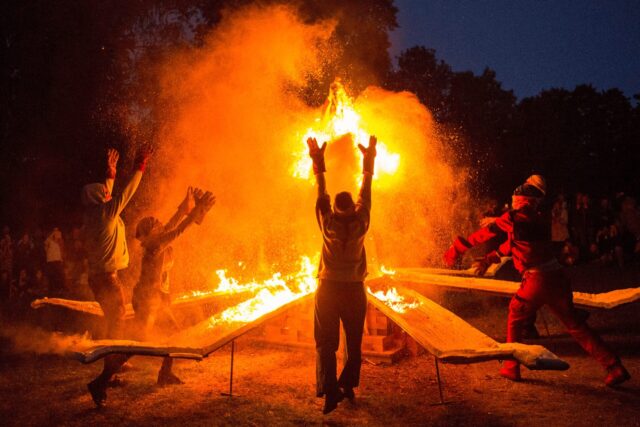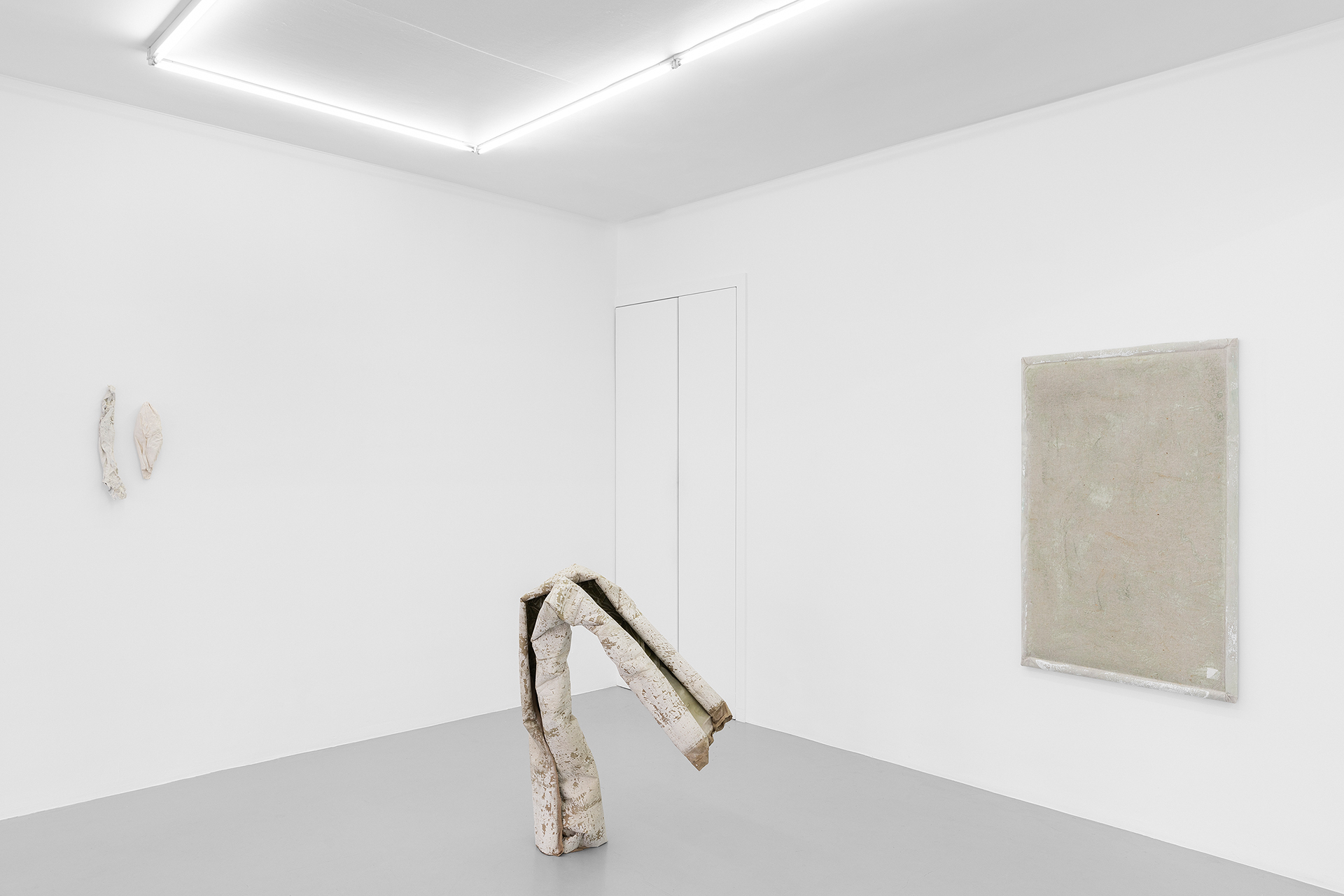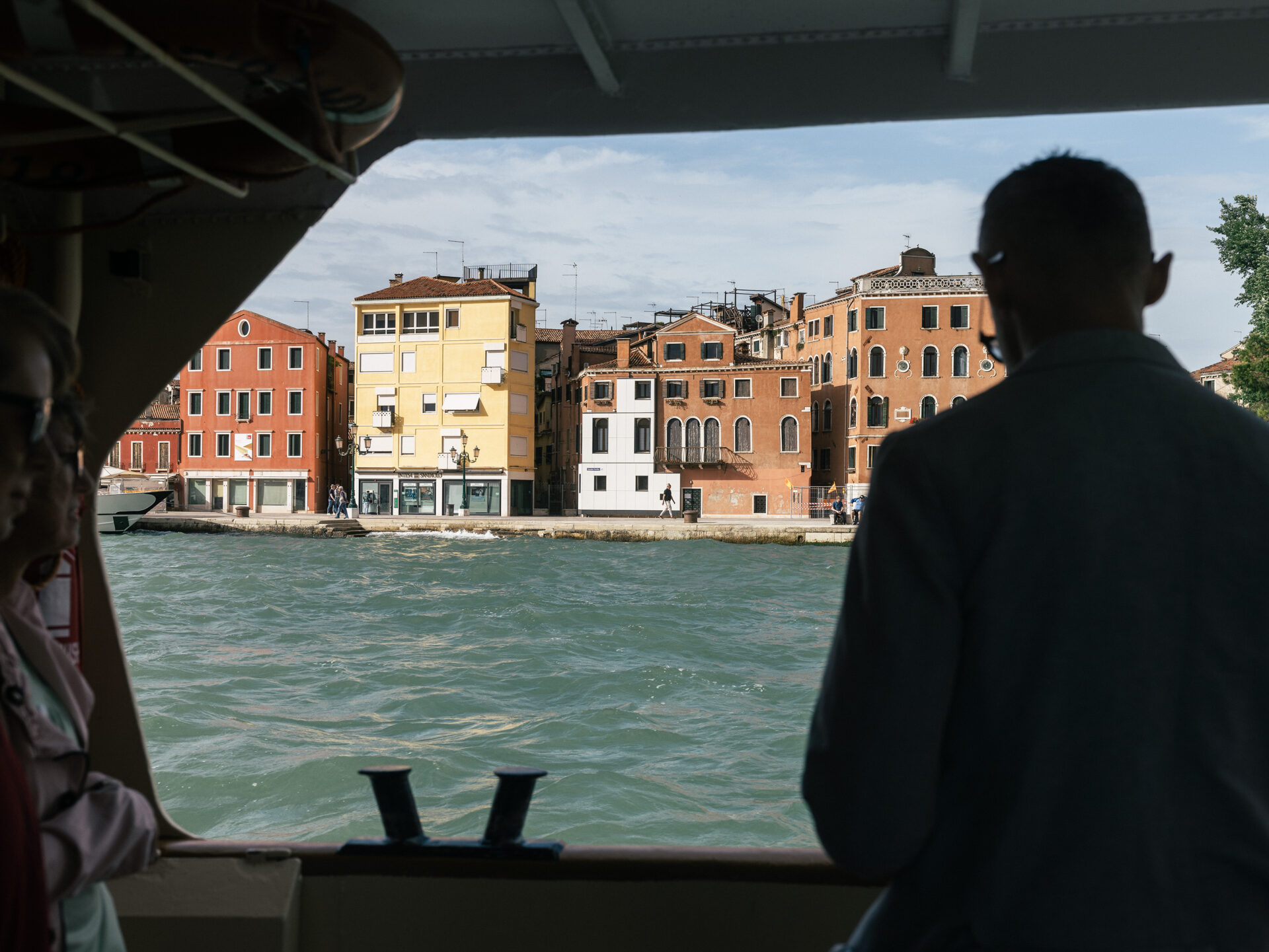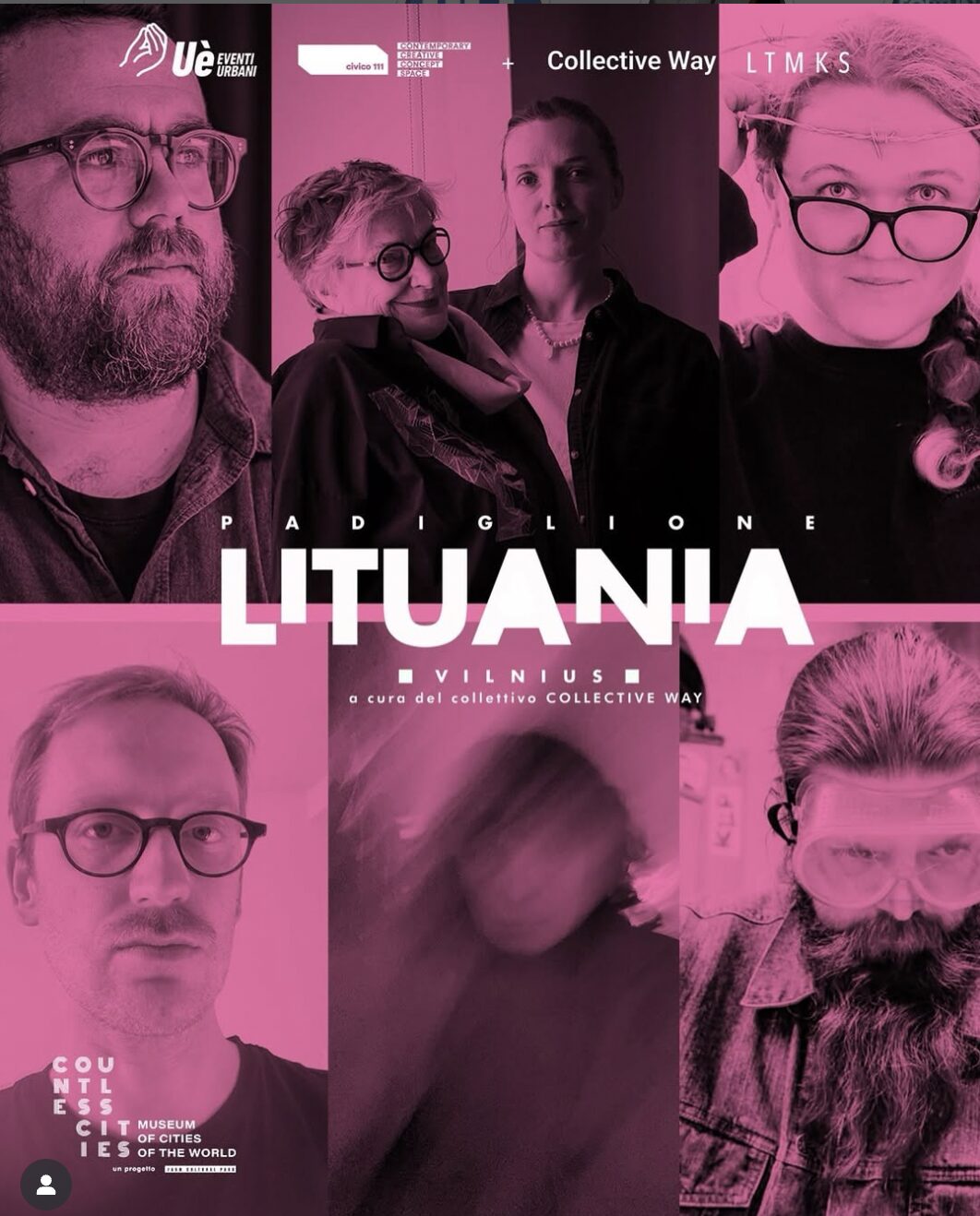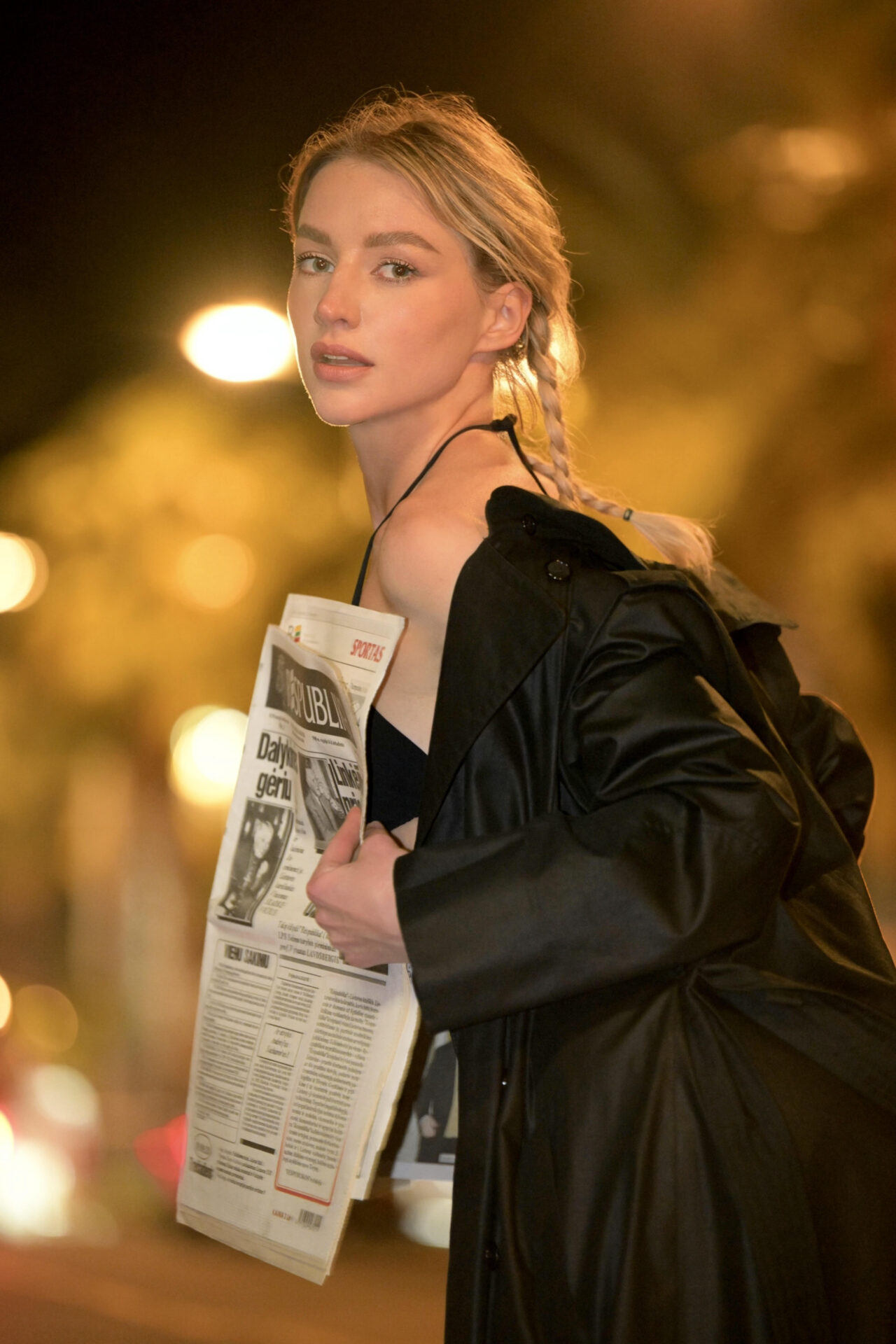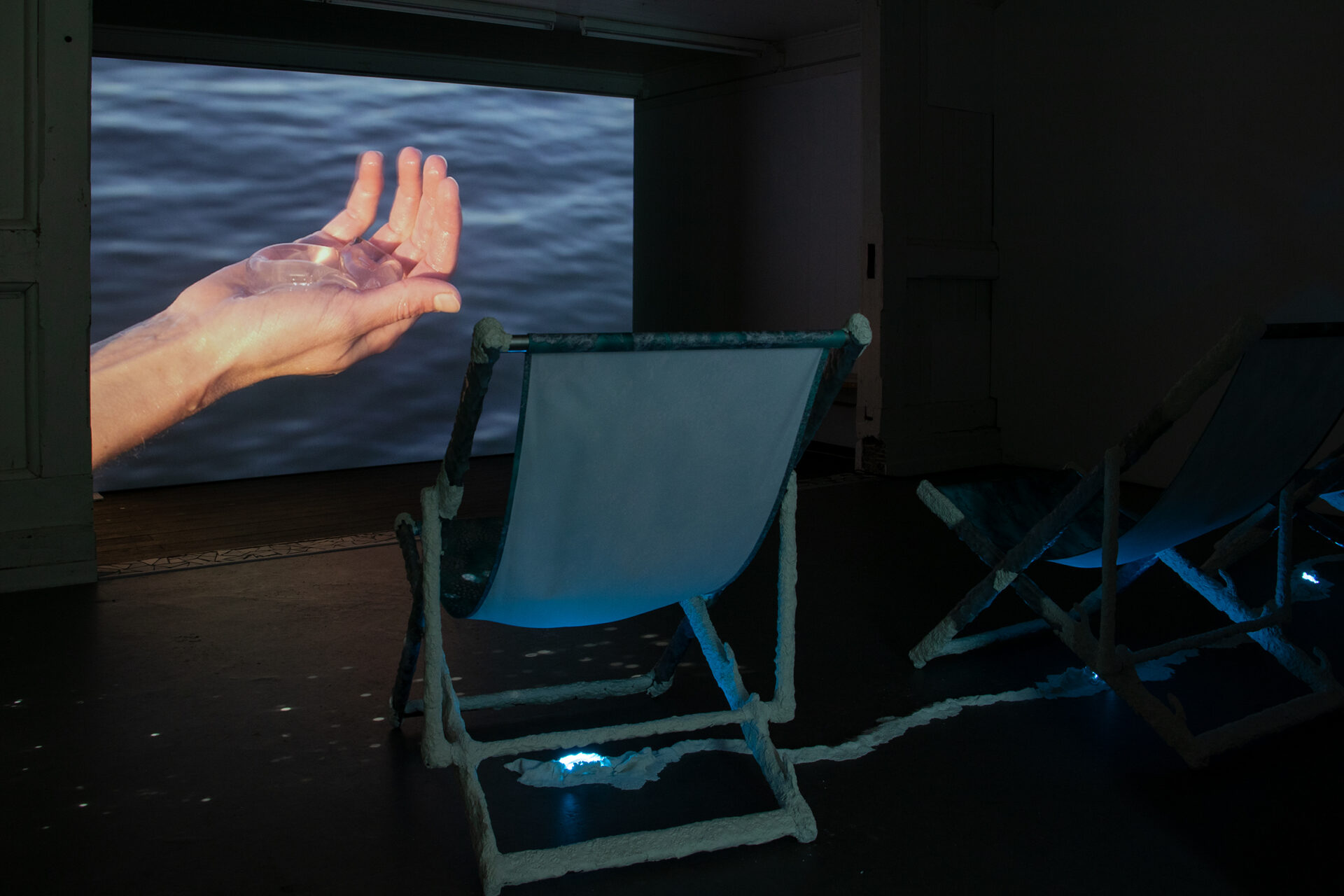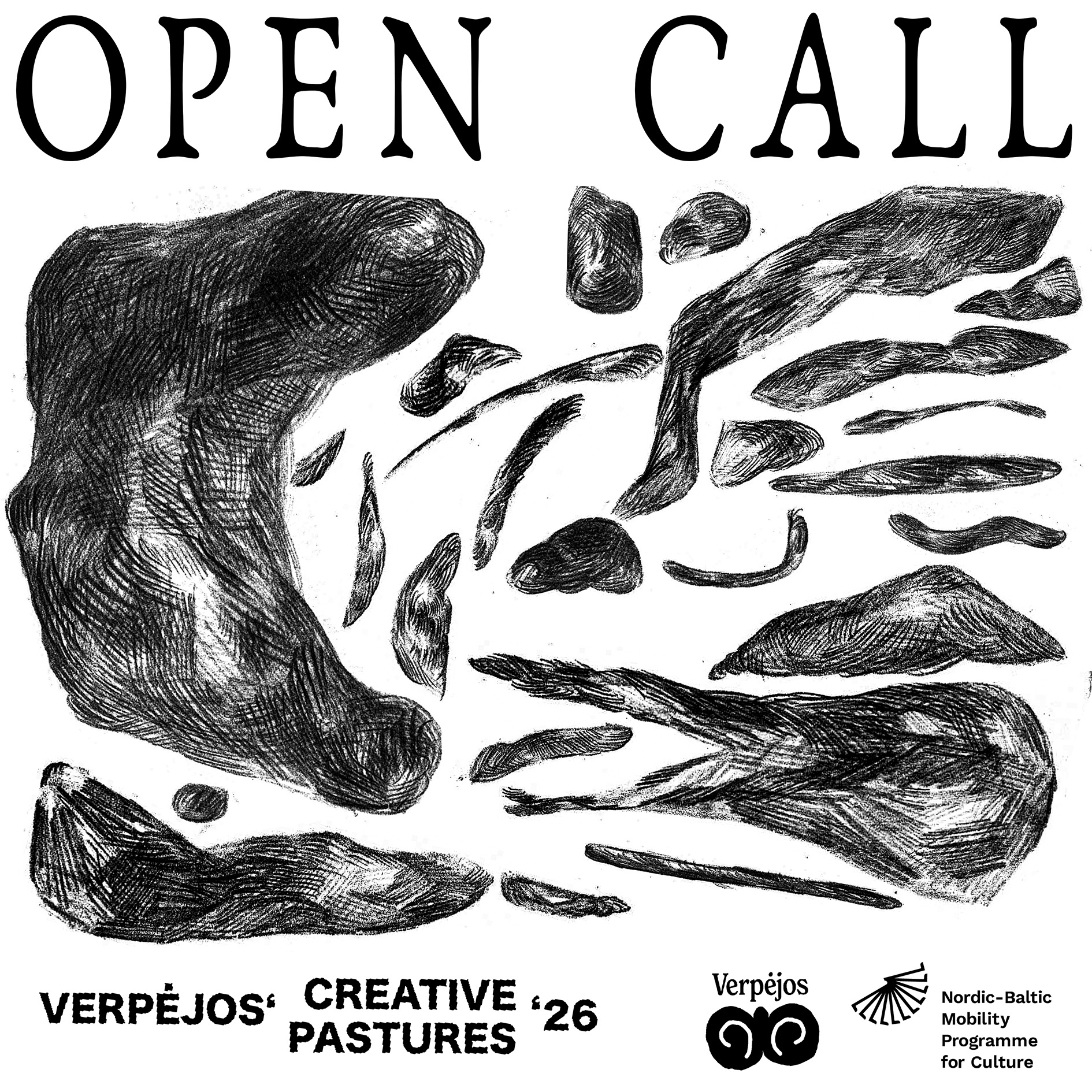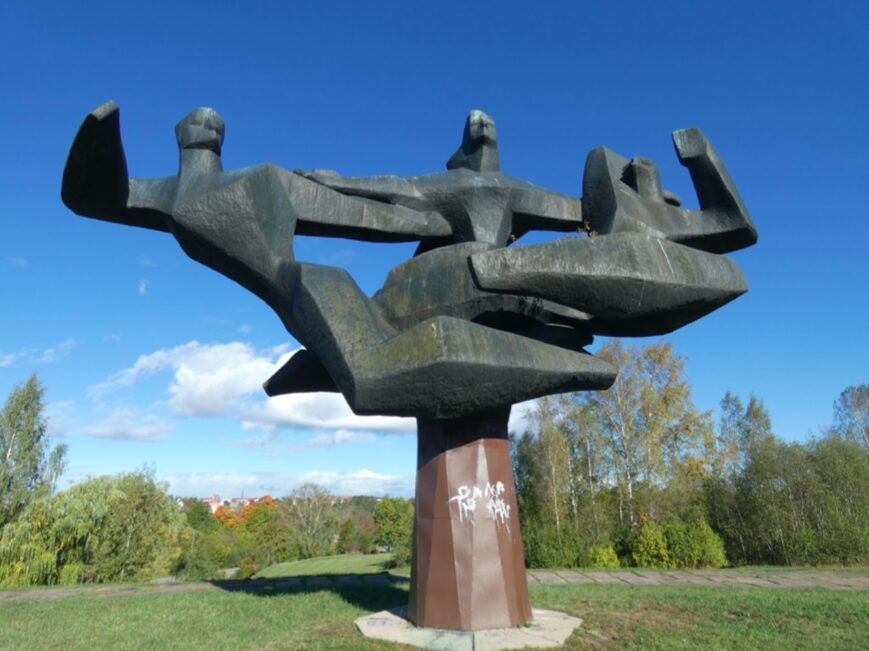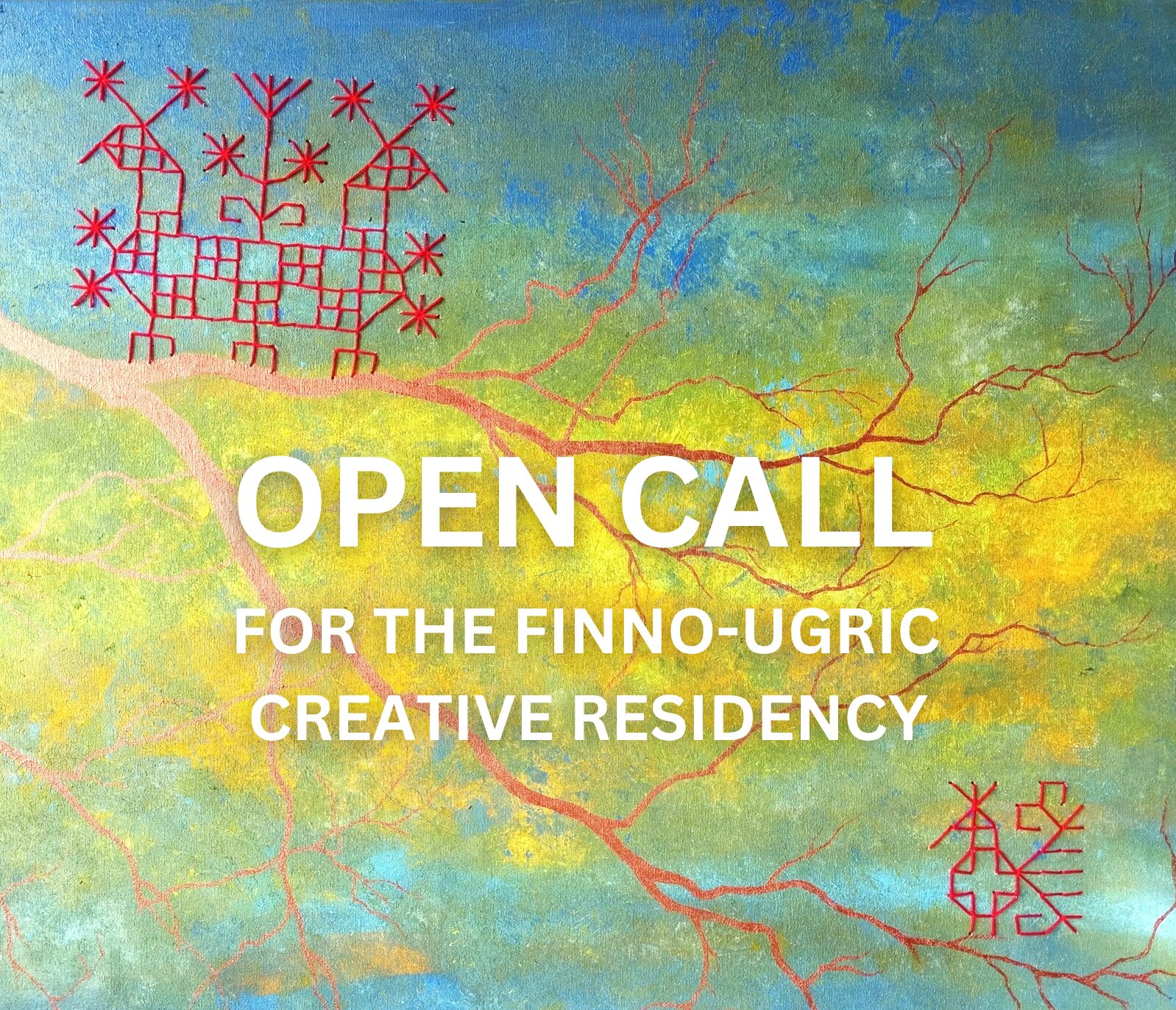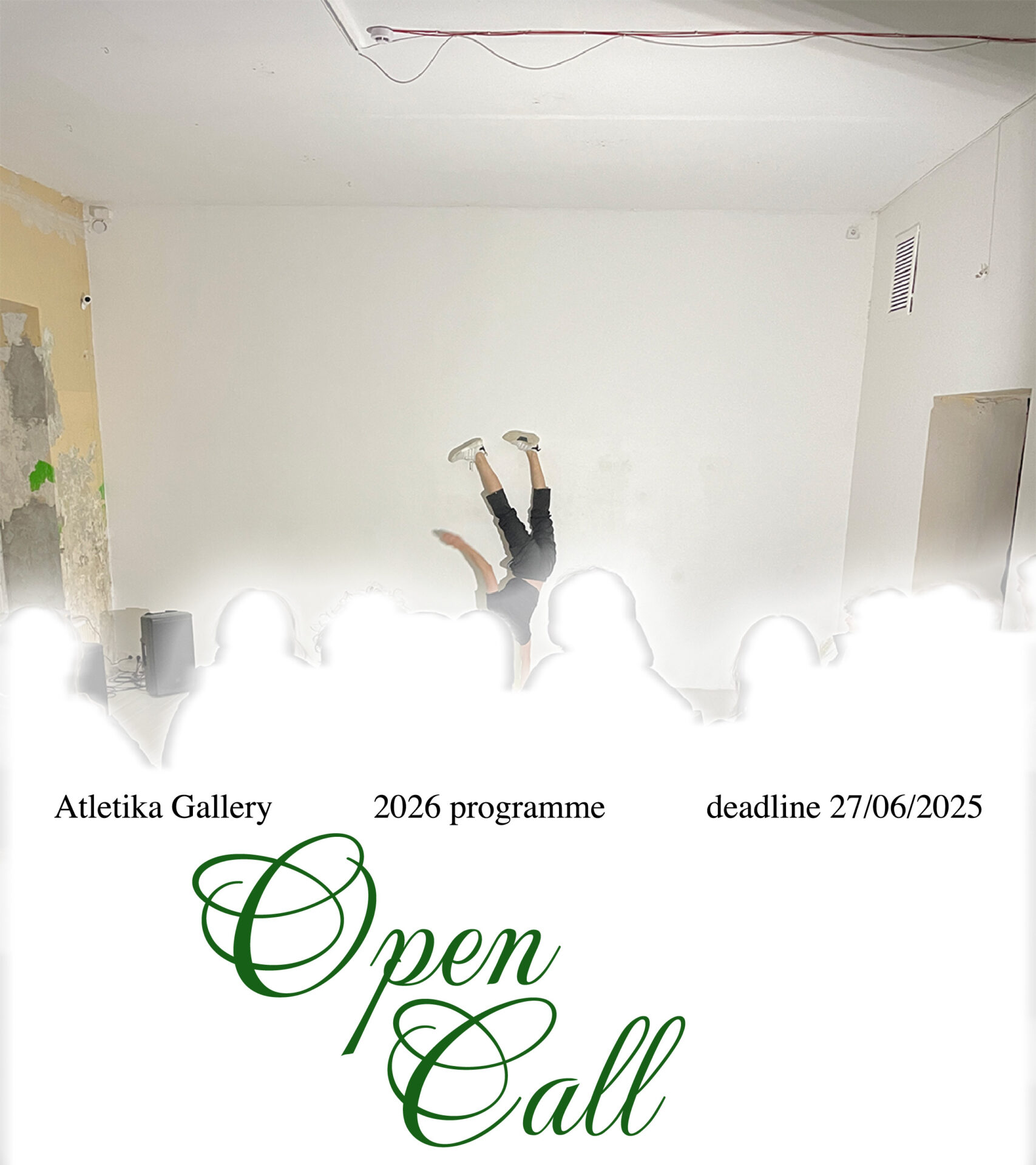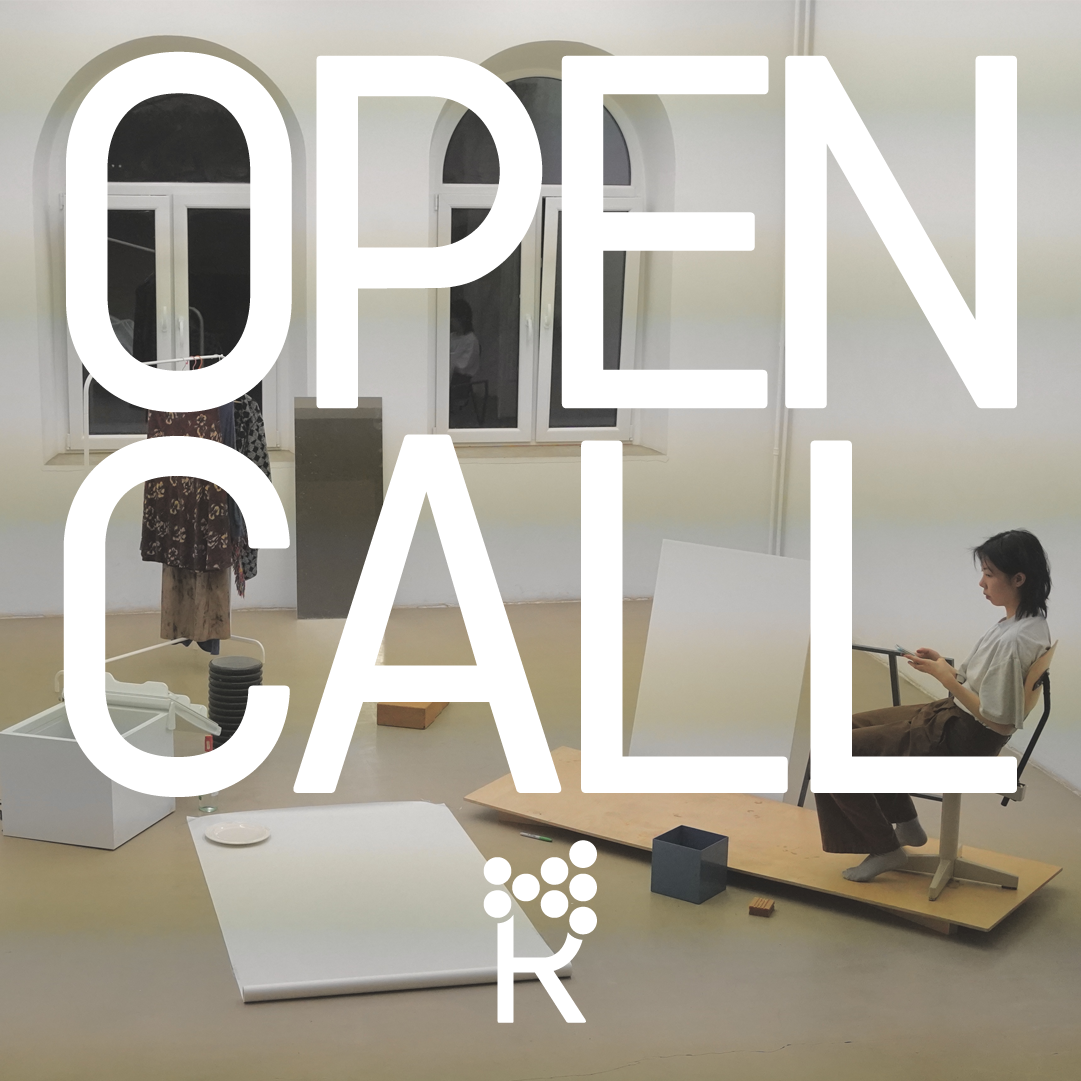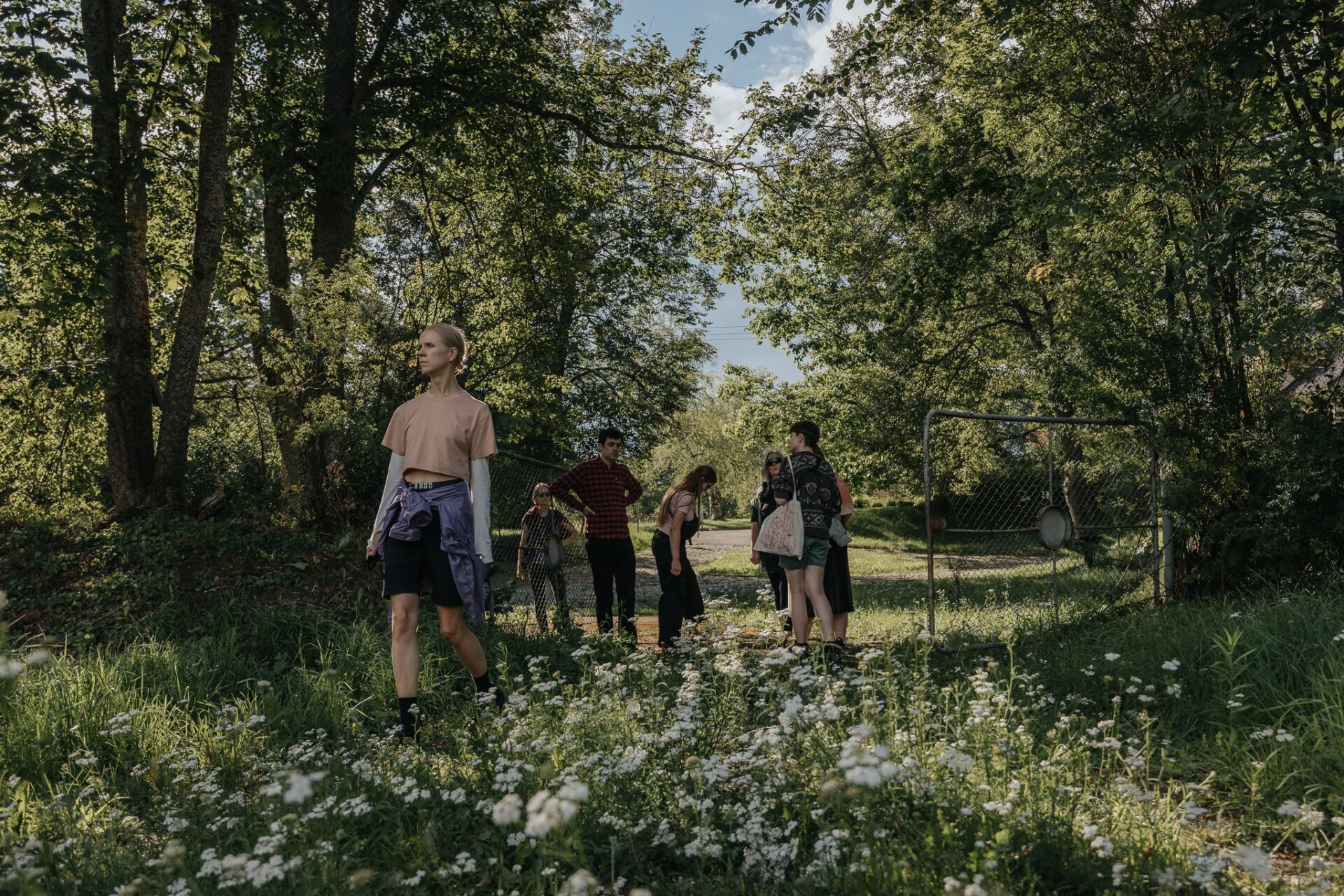It is impossible to predict what the artist Rūdolfs Štamers will propose in his next solo appearance: eight-metre paintings; heartbeats, the whispered flow of his thoughts, or the best of 2000’s pop hits as a background; clouds of different aromas; portraits of fallen angels and their DJ tables; a parrot that dreams of being an eagle; materiality deconstructed beyond recognition, rugs made of human hair and a chance for visitors to cut off their own; to fog and change the ambience of the space, making visitors question their prior knowledge of it; the performative involvement of other artists. And these are just a few examples of what Štamers has done so far in his art.
Rūdolfs Štamers has been living outside Latvia for more than six years, but has not left his homeland’s art scene. His previous exhibition in Riga ‘Voices in my Heads’ (TUR art space, 2023) was nominated for the Purvītis Prize, the main award in the visual arts in Latvia. He initiated and co-founded the TUR art space in Riga. He has received a BA from the Department of Visual Communication at the Art Academy of Latvia. He has studied as an exchange student at the KASK School of Arts in Ghent, interned with the installation artists Guillaume Bijl, and received an MA from the Department of Sculpture at the Royal Academy of Antwerp. After that, Štamers moved to Paris, where he lives and works today, and founded the artist-run space New Garden Galerie. His studio always smells of deconstructions of industrial materials. Metal, composite materials, synthetic fabrics and transformations of plastic are some of the key elements of Štamer’s dual creative work. The owners of his wall-based works can often transform the compositions. It reveals the importance of time as the fourth dimension in Štamer’s artistic practice, both in installations and wall-based works.
In ‘Somewhere Something Fell Down’ at the Kim? Contemporary Art Centre (25 July until 8 September 2024), so far his biggest solo exhibition, Rūdolfs Štamers heightens visitors’ senses on the hitherto new vestibular level, thus clearly expressing his natural inclination to always strive for something unprecedented in his work. For me, it has always been interesting to talk to him. We decided to publish our reflections on both his solo exhibition at Kim? and on previous projects.

Detail from Untitled, 2019, mixed media on canvas, 100 x 140 cm, from the ‘Blackouts’ series. Photograph courtesy of Rūdolfs Štamers
Elīza Ramza: Your creative work is not tied to one medium or material; rather, it can be characterised with time as being a unifying essence of your works, its flow and ‘in real time’ experience. It is present in your opening performances, happenings and aromas in space, and even in your wall-based works; for example, in the ‘Blackouts’ series (2018), where you made layers of different-coloured plastics that over time distort and reveal other sub-layers. By letting time become an important part of your work, you give away control. I also remember that the idea behind ‘Blackouts’ was about giving control to the unconscious.
Rūdolfs Štamers: None of us has enough time in this world, so that is what interests me: the timeless, things that I won’t be able to experience, and probably even the next generation, maybe only the ones after them.
The ‘Blackouts’ series was based on my own blackouts, but slowly starting to work with them, I realised that it reflects vividly the passage of time, and the fact that we initially don’t see things, they reveal themselves in new ways only over time. These works are like dreams, we experience and then forget, and it takes time to perceive everything seriously and clearly when we return to consciousness. For example, at the beginning, the world was so happy to discover plastic, but now it has become one of our biggest struggles. And similarly, to our minds that think slowly and unravel slowly the mistakes of the past, trying to get better, these layers of plastic represent reaching new perspectives of our experience, like unpeeling realities.
The upper layer is mostly dark, but plastic will dissolve other un-open layers, brighter and more vivid. And there lies the unknown, much of it I have already forgotten. Texts, my thoughts. Teeth that are eating our time away, chains in which we are held by time …

2020, mixed media on canvas, 2020, 140 x 180 cm. From the group show ‘20/20’, Royal Academy of Fine Arts, Antwerp. Photograph courtesy of Rūdolfs Štamers
ER: The analogy of the chains of time is reflected in your installations too, where time is essential as a risk to miss out, to not be there at the right moment, the impossibility of experiencing it without being physically present. This was very apparent in the installation Svalka (2019, created together with the artist Alise Sondōre), where once every ten minutes glasses ‘fell down’ from the podium. I vividly remember the excitement of waiting for that particular moment, and the feeling of ‘missing out’ if I was at the other end of the museum and had to wait another ten minutes (laughs).
RŠ: Yes, Svalka turned into a sound installation as well, because we used a vibromachine that ‘vibrated’ the glasses down, making a big rumble. I was told that when lectures were held in the exhibition, speakers had to have a minute of silence, as it was impossible to speak over the noise. All those clutters afterwards melted in the one big block of fortune: in Latvia breaking a plate is considered to bring good luck, so I hope the lecturers had good luck too (laughs).
Time really fascinates me. For me, it is an unbeatable mystery that cannot be stopped, so I want to make visitors dwell on it. My current practice is directed towards the present, the feelings and experience of the given moment, to be in the installation, to discover it with all the senses, and to move towards ethereality, like a dream that fades away from the memory. That’s why the visitor and their unpicturable experience is a very important and irreplaceable aspect of my installations. It’s also funny that the only ones who care about time are us humans. Nature will continue its life this way or that. In my practice, I want to focus more on longevity.

The installation Svalka, in collaboration with Alise Sondōre, LMA centenary exhibition ‘Academia’, Latvian National Museum of Art Exhibition Hall Arsenāls, 2019. Screenshot from Rūdolfs Štamers’ website
ER: You used a comparison with a dreamworld; it plays a significant role in your work. Before the curator Zane Onckule invited you to hold an exhibition at Kim?, you applied for their open call with an idea that you had seen in a dream. Is there anything remaining from your first idea in this exhibition?
RŠ: I think that dream came true quite a lot. For example, in my dream there were also three separate rooms, with a shaking floor in the first one. In my dream, I entered the room, and the ground under my feet started to move, and there was also some strange light around. In the second room, I saw an installation that encompassed all space. I don’t remember exactly, but on the feelings level, it was the same controlled chaos that I worked on for the exhibition, putting together sketches and models for a year. In my dream I didn’t enter the third room, but at Kim? it was transformed into a commercial room, with Vivaldi’s Four Seasons playing in the background as a representative of the traditions, the unwritten rules, that the commercial art world revolves around.

The first space in Rudolfs Štamer’s solo exhibition ‘Somewhere Something Fell Down’, Kim? Contemporary Art Center, 25 July to 8 September 2024. Photograph by Ansis Starks
ER: This is not the first time a dream has stimulated the birth of your work. The juxtaposition of the dream and wakefulness was at the centre of your final work for your MA degree. In one of your exhibition’s tours at Kim? you joked that you felt as if you were kind of stealing from yourself, taking another idea for an artwork from your dream.
RŠ: I believe that you can steal from yourself, especially if it comes from a dream, unconsciousness, something that you don’t access directly in everyday life. In the dream whose idea I proposed for the Kim? exhibition, I entered an exhibition by someone I didn’t know. That’s why I made the suggestion that I had stolen these ‘works’ from someone. It could be translated as unconscious impressions, influences, visions, some deep, hidden thoughts that are hard to access. Then I understood that it’s an exhibition that I strive for, as it comes from my subconscious.

The second space in Rudolfs Štamer’s solo exhibition ‘Somewhere Something Fell Down’, Kim? Contemporary Art Center, 25 July to 8 September 2024. Photograph by Ansis Starks

The sculpture As in Heaven so on Earth from the ‘Fallen Angels’ series for the group exhibition ‘Surrender’, 2020, Pilot LMA gallery. Photograph by Ansis Starks
ER: How did you decide on the representation of the art world’s commercial side? It is hard to find the exit from the second to the third room, especially if people aren’t used to physically touching contemporary art installations. Kim? mediators also mentioned that they often suggest visitors go back and find the third room. Can you explain why you chose it to be this way?
RŠ: The main reason is that installation art is most important for me. I want to create what I want to create, and these are mostly not pieces that can be called ‘sellable’, but immersive, intangible compositions that are sooner or later meant to be torn down. The exit doors in my exhibition are secret, because commerce can be found only by whoever needs it. It’s kind of my half-secret nature. Of course I would like to sell all my works, because material studies and the process of creating works give me much pleasure; but yes, I think my main goal is to make immersive site-specific installations.

The third space in Rudolfs Štamer’s solo exhibition ‘Somewhere Something Fell Down’, Kim? Contemporary Art Centre, 25 July to 8 September 2024. Photograph by Ansis Starks

The third space in Rudolfs Štamer’s solo exhibition ‘Somewhere Something Fell Down’, Kim? Contemporary Art Centre, 25 July to 8 September 2024. Photograph by Ansis Starks
ER: Your installations are strongly centred around the visitor’s sensory experiences. A somatic experience that engages all the senses, this time except a taste: everything looks black and white, a perfume machine that gives off Santal 33, Vivaldi’s music and the recording of your thought processes, the need to grope in the dark to find the exit, and also the tickling of the vestibular apparatus. In visitors’ reactions, one can spot both the delight caused by confusion about what is happening to them, and also a helplessness, followed by relief when they find the exit from your immersive installation. Something similiar to Ilya Kabakov’s total installations, but in my opinion you go even further, since in ‘Somewhere Something Fell Down’ you don’t use ready-mades as symbols for a particular message and carriers of easily recognisable associations, but all this immersive installation is made of your artworks, deconstructed elements of hardly identifiable materials.
RŠ: But they’re still ready-mades after all! Works, sculptures that I have made by myself, left in storage and forgotten. Now they are rediscovered and presented in a different light. Maybe previously I used found objects and ready-mades more often, because I didn’t yet have my own works to show, so I just exhibited already-existing things (laughs). And now these four years that I spent in the Paris studio made me consider and try new directions, to rethink the way I work, so the classic ready-made has taken a back seat. But for me everything I made previously is a kind of a ready-made, a ready object. And this time I used a perfume that is already known, that is also a ready-made. I was thinking about perfumes for about five years, but I haven’t yet dreamt of how to incorporate them. This dream is not coming to me (laughs). Maybe it will take me years to find it, and then sit in the lab with perfumers, scientists, to make my own perfume for my installation. And then it will seem silly that I have used Santal 33 as a symbol of the elite art world.
I’ve always loved smells, tastes and sounds, everything that can’t be captured in a photograph or a video. I just feel it is necessary and needed in my work. An extension, a direct experience, in contrast to scrolling pictures on Instagram and thinking that you know, see and sense everything. My wall-based objects also can’t really be photographed, because there is that depth, blacks and whites, reflections from all the mirrors and other surfaces …

The Kim? installation integrates works from the past: 3×5 m paintings from the exhibition ‘Voices in my Heads’ and melted plastic film works from the 2019 series ‘Blackouts’. Photograph by Ansis Starks
ER: I think that in this exhibition you have really successfully cracked your practice with those shakeable wall works: they are like crystallised mini-versions of your immersive installations that can be taken home and put on a wall. And the visitors are important, in the sense that they activate these undocumentable experiences that carry them. In this series of shakeable shadow boxes, the owner can rearrange, change the compositions the way she, he, they or whoever else, wants, to become a co-author.
RŠ: It is similar to the way I made the works in the ‘Blackouts’ series. I created my signature that can be read in both ways, since the exhibitor chooses the position of the artwork. In this series of flakes, I designed a kind of gear instead of a small hook on the back of the work that allows the work to be placed in every position around 360 degrees by anyone who accesses the work, the curator or the owner. I love these uncontrollable actions, unmanageable coincidences. In the other series … yes, it is strange that I haven’t dreamt or thought of the title yet (laughs), so at the moment I call them shakeable works: shadow boxes filled with many small elements, different materials that are not fixed. It means that after being packed and transported, this work will be shaken, so these details, wires, for example, will form a slightly different composition.

The so-called shakeables, mixed media, 33 x 43 x 4.5 cm. Photograph by Ansis Starks

The so-called shakeables. Photograph by Ansis Starks
ER: Both series were made for ‘Somewhere Something Fell Down’ at Kim?. The deconstruction of materials, by heating, melting, changing their physical condition until they are beyond recognition, has always been a part of creating your works. How did you come to these wall-based sculptures of flakes?
RŠ: Accidentally, a year ago, when I was doing something with paint on plexiglass, and wasn’t happy with the result. So I just smashed the piece with a hammer. I saw in these shards, painted flakes, that other beautiful combinations can be made. Then I got a lot of plexiglass. I both painted them and broke them. After this aggressive act, I got on the mediation for several months where I was looking for the right pairings, the perfect compositions, which may look simple, but it is actually quite a frustrating process.

Untitled, 2024, plexiglass, paint, mirror paint, comatex, glue, 100 x 120 x 8 cm. Photograph by Ansis Starks
ER: Let’s return to your immersive installations: what is your position on repeating such site-specific installations, the adjustment to a specific space in another art institution? Do you generally see your installations as re-exhibitionable entitites?
RŠ: I wouldn’t like to repeat it, because I just get bored. This idea was in my head for a whole year. I have realised it. I have spent two weeks building it on site and being alone in that darkness. I ended up feeling like a visitor in this immersive piece, because I’ve already lived through it and now see it from the outside. It would definitely be a different installation, maybe a combination of installations again, maybe the aroma and shaking floor put together in a different room, different colours. I get bored easily, so I need to change techniques, deconstruct, and do things incorrectly, to find new ways, shape, and improve my creative work.

Material studies in the studio. Photograph courtesy of Rūdolfs Štamers
The second room in the exhibition, the so-called immersive installation is my world, the same voices in my head, dialogues with myself, my struggles, my results. I think it’s amusing that Latvian artists don’t usually exhibit their works repeatedly. Since we’re not so many, you feel you can’t show the same thing twice. But actually, so much of it is forgotten or unseen.
I combine these works from different times, and the whole installation is a formation of studio work of four years, multiple material studies in the search for the ideal version and combinations. Such a big cross-over of processes, controlled chaos, something grotesquely beautiful has come out of it, in my opinion. I also like sustainability, that’s why I’d love to maintain some parts of this installation, and maybe integrate them into my future works. In this way it will be a ready-made, a found object that can be used again by making something else.
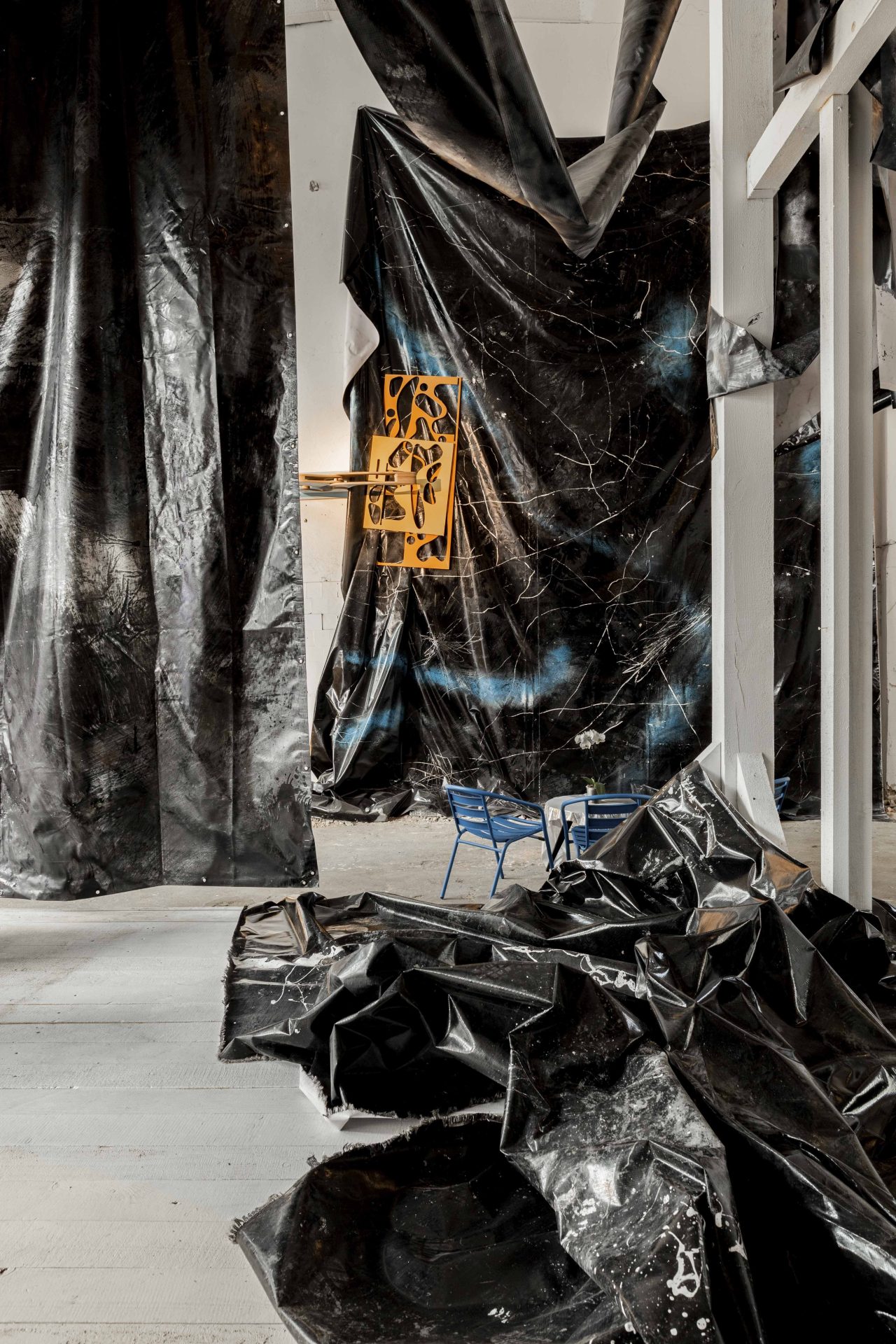
Part of the installation from the solo exhibition ‘Voices in my Heads’, with an integrated sculpture by the artist Uģis Albiņš. Photograph by Filips Šmits)
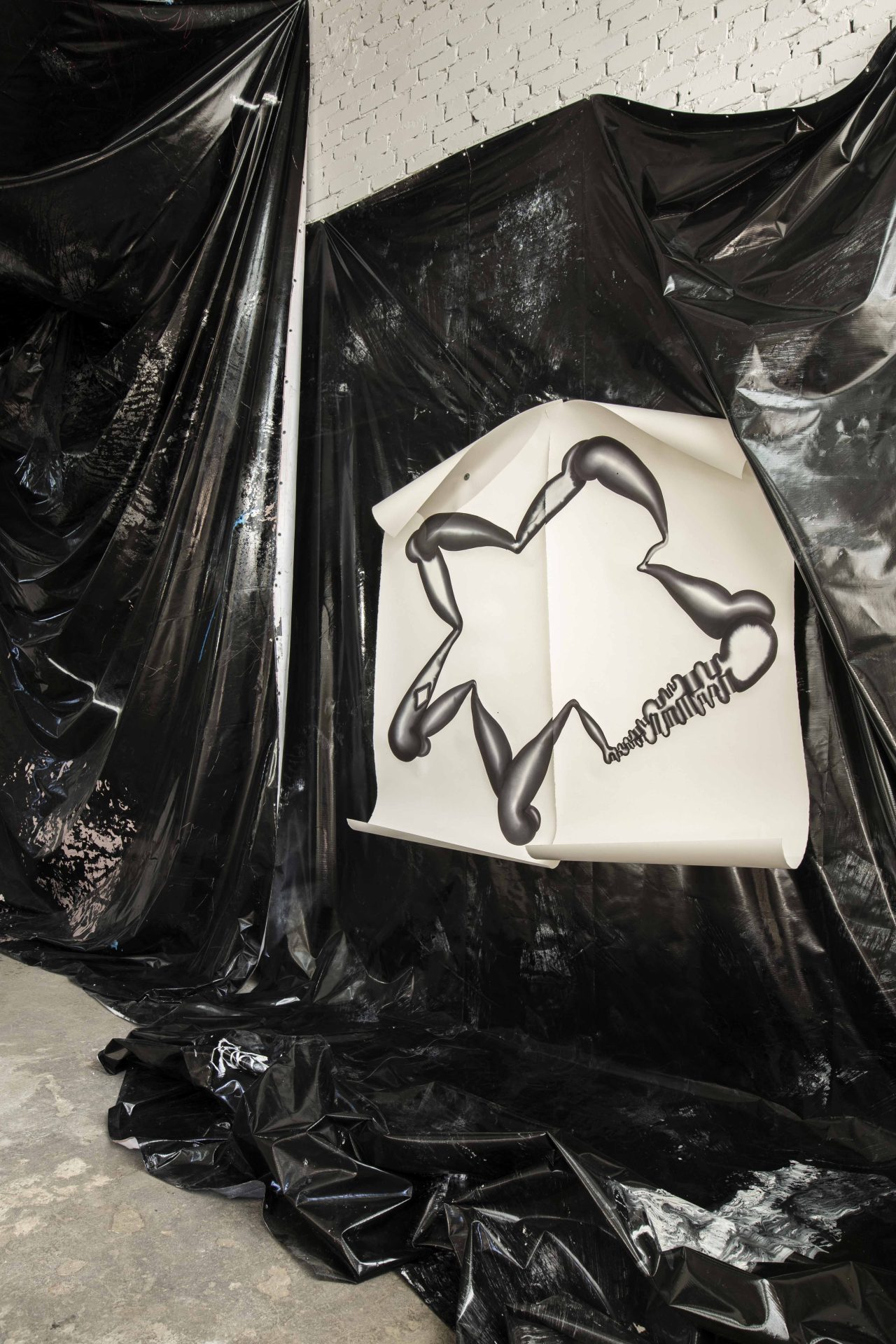
Part of the the installation Voices in my Heads, with an integrated work by the artist Sabine Vernere. Photograph by Filips Šmits

From the 2018 show ‘Dream Baby Dream’, a performance by Ludovica Cuzola. Photograph courtesy of Rūdolfs Štamers
ER: Yes, I have noticed how easily you get bored, maybe that’s why you’re so drawn to organising exhibitions for others and initiating art spaces. In your solo exhibitions you also integrate works by other artists in the style of early Franz West installations, or by performatively involving composers, or making live sculptures, like your Venus of Urbino after Titian, or Life in a Cage. The presence of other artists runs through your art, while sometimes extending in, as you call yourself, in the role of a cultural developer …
RŠ: Yes, but I’m not planning to use animals (like the parrot in the work Life in a Cage) again in the near future … I felt quite sorry for that little creature. At the end of the exhibition the parrot found a good home with a lady who has more than thirty parrots. So I believe the little performer is living his best life now. But I plan to continue collaborations with others, with musicians and their own proposals, not just performers, with sound artists, poets, speakers … I’d like to unite humans’ abilities into one ensemble.
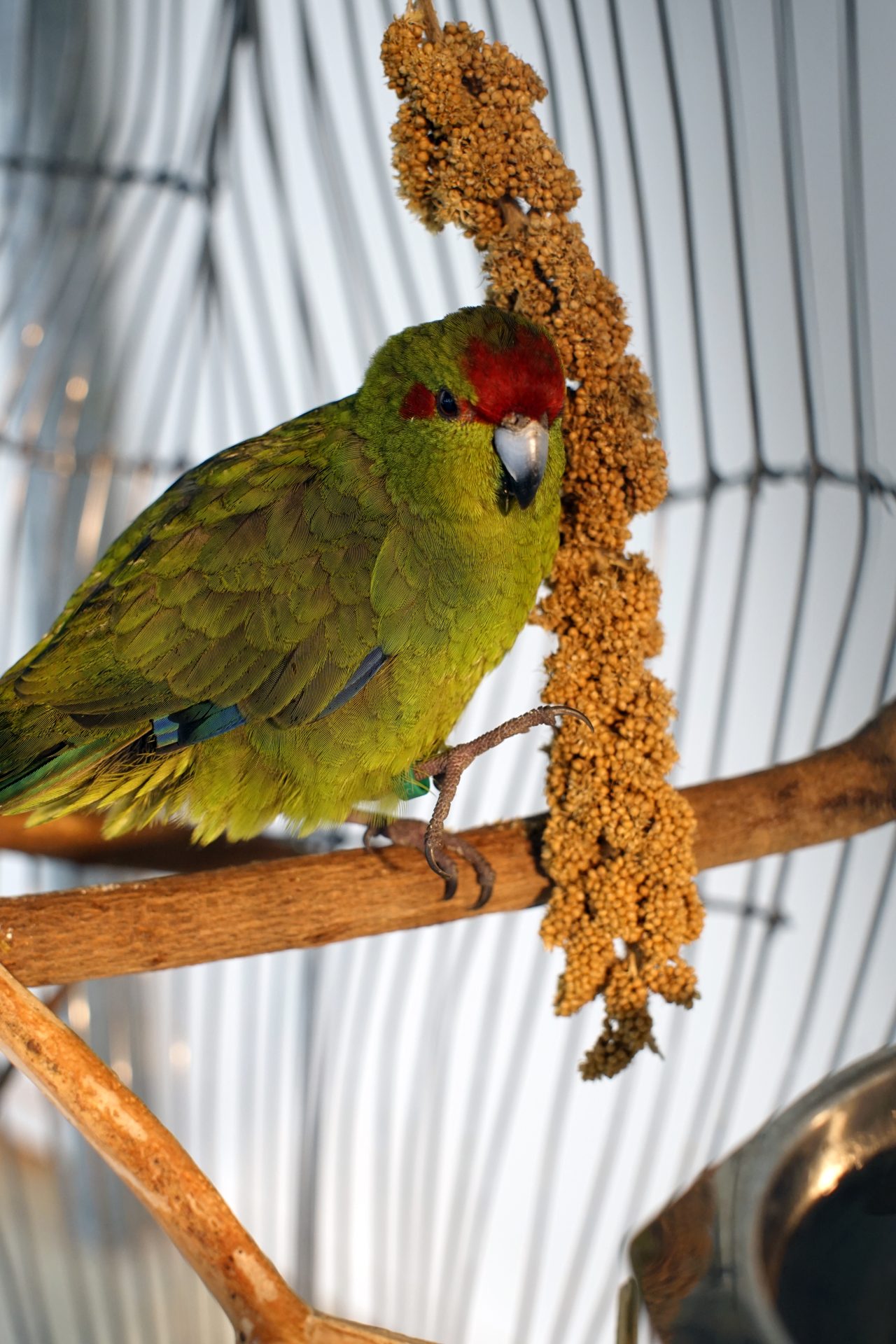
Parrot life from the sculpture Life in a Cage. Photograph courtesy of Rūdolfs Štamers

Part of the installation I saved You Yesterday so You Can Save me Tomorrow from the MA exhibition at the Royal Academy of Fine Arts, Antwerp. Photograph courtesy of Rūdolfs Štamers
I’ve always felt the urge quite naturally to do exhibitions. About nine per cent of what I have done has been on my own. My first exhibition was when I was eighteen. I found the space, and organised everything by myself. The same goes for the next shows, happenings, one-day exhibitions. I made it all by myself, and then it grew into a group exhibition, because I just got tired of doing it alone. It’s just impatient me: I get bored waiting for invitations to exhibit something, so I had to make my own events. The TUR art space was established because we lack art spaces in Riga, especially for young artists, where they can express themselves freely, without commercial or other restrictions, and feel appreciated. I started it and still keep an eye on it, but I live in Paris and previously lived in Antwerp, so for most of the time I’m not physically on site, so I call myself a cultural developer instead of a curator, because I’m the one who just helps a little, introduces, pushes the process … And I want to focus on my own practice more. But still, there are offers from people who want to have exhibitions at my New Garden Galerie in Paris. And if I have a spare moment, why not help friends and acquaintances, help them feel appreciated? It is just the way I want to feel.
ER: Yes, it sounds so effortless, feeling appreciated. Thank you, Rūdolfs, for doing all this! (Rūdolfs takes a sip of his beverage and smiles)
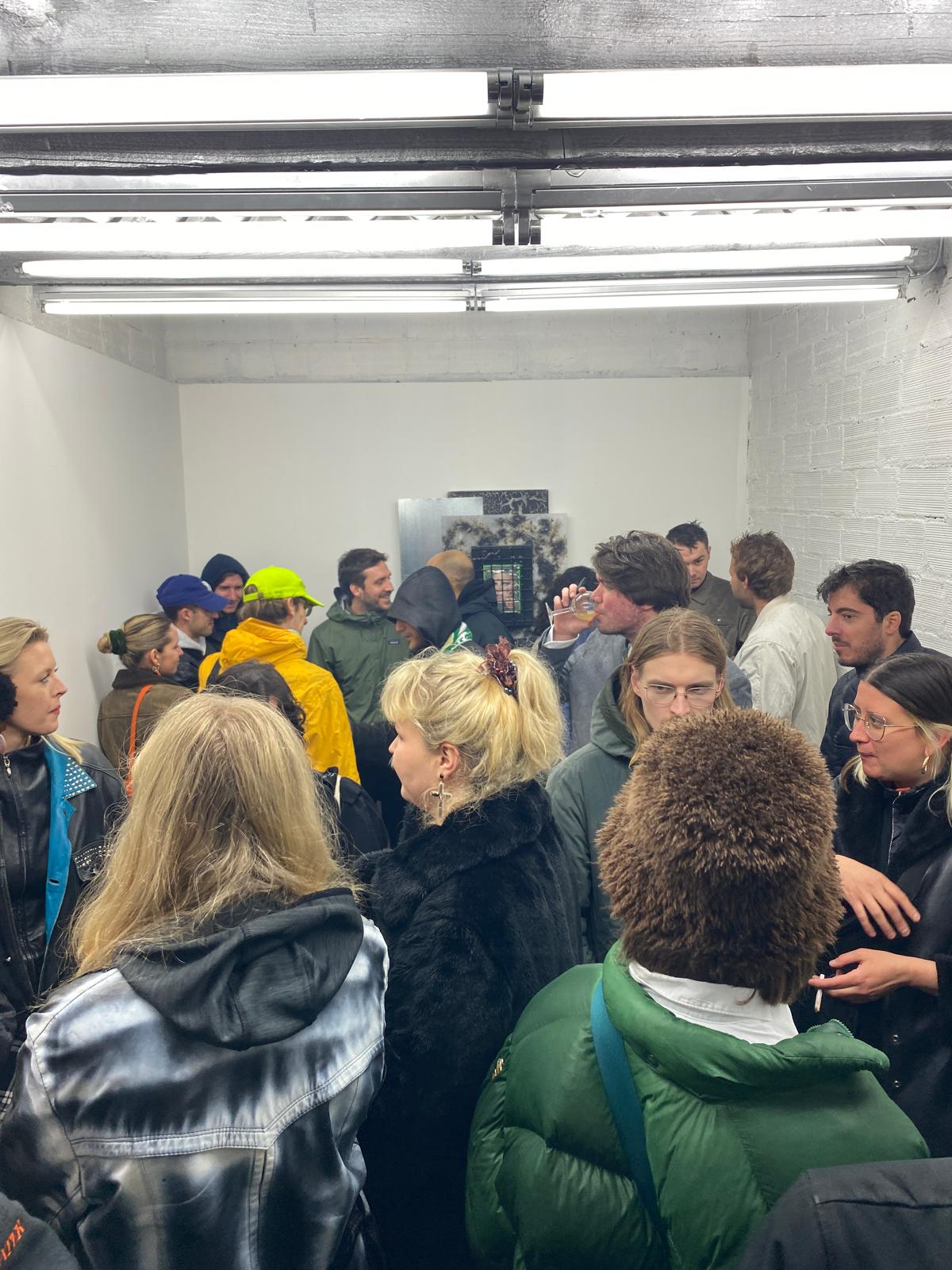
The opening of the artist-run space New Garden Galerie. Photograph courtesy of Rūdolfs Štamers
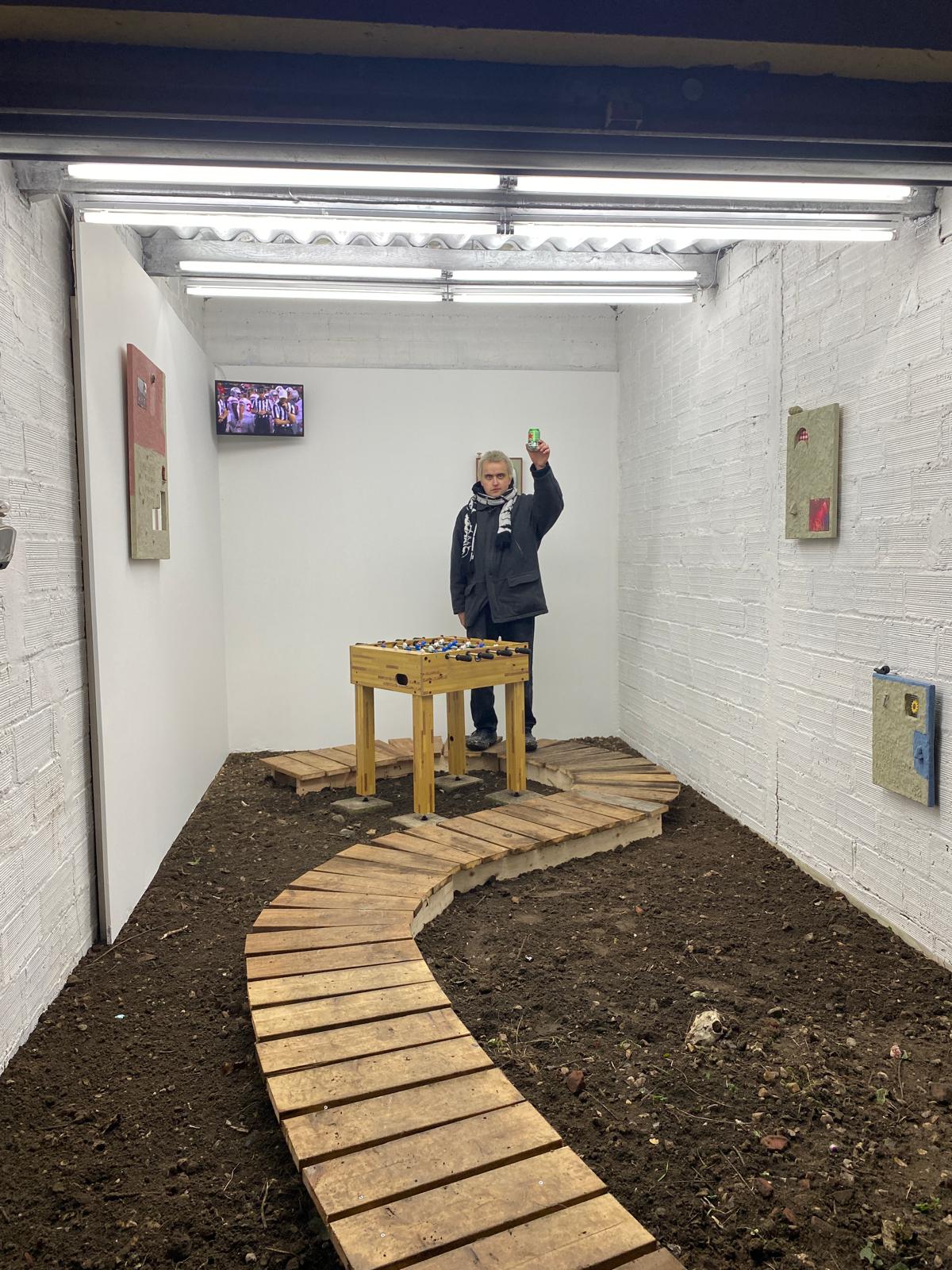
From Michael Price’s solo show ‘Breaking Ground’ at the New Garden Galerie, December 2023. Photograph courtesy of Rūdolfs Štamers
